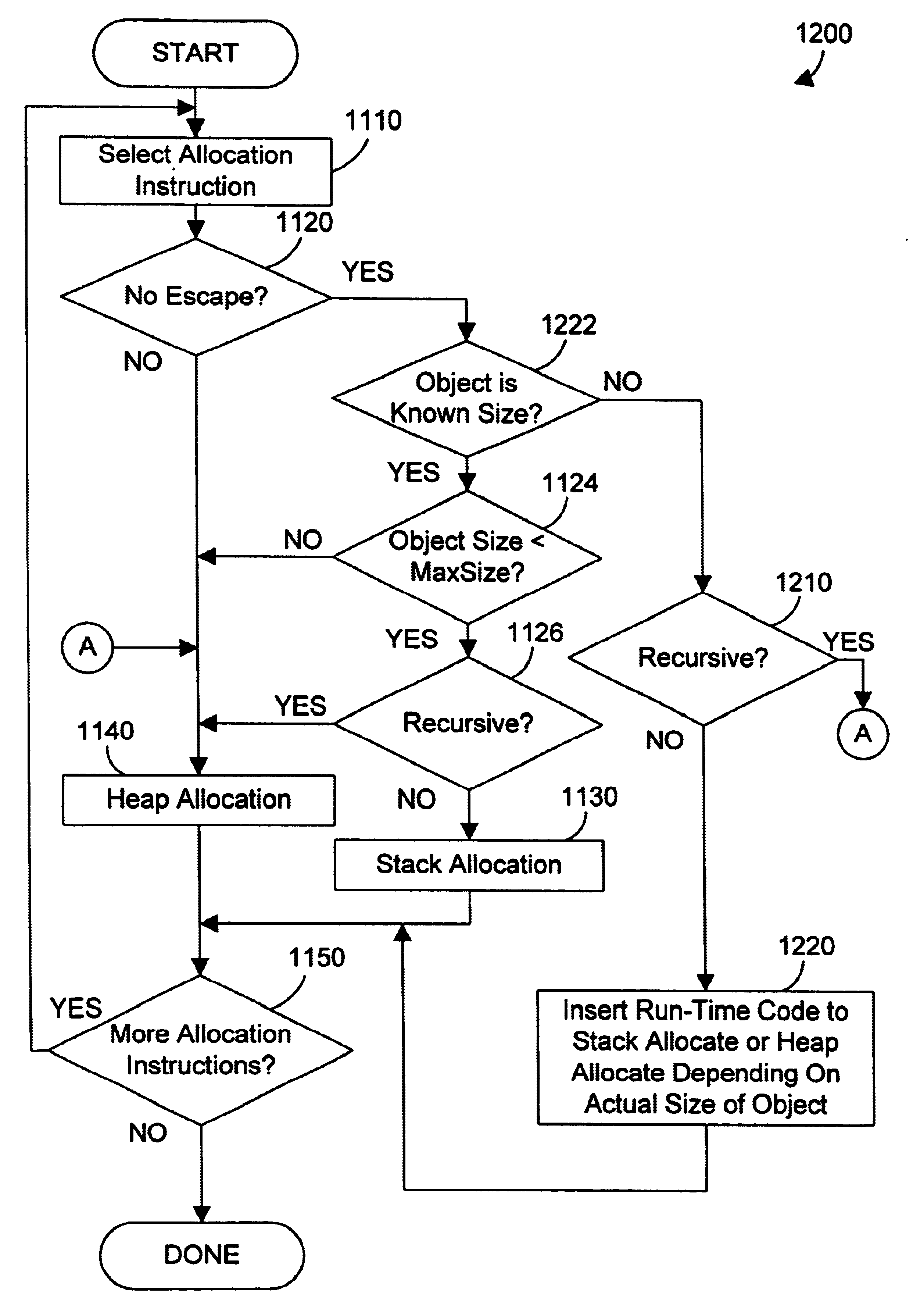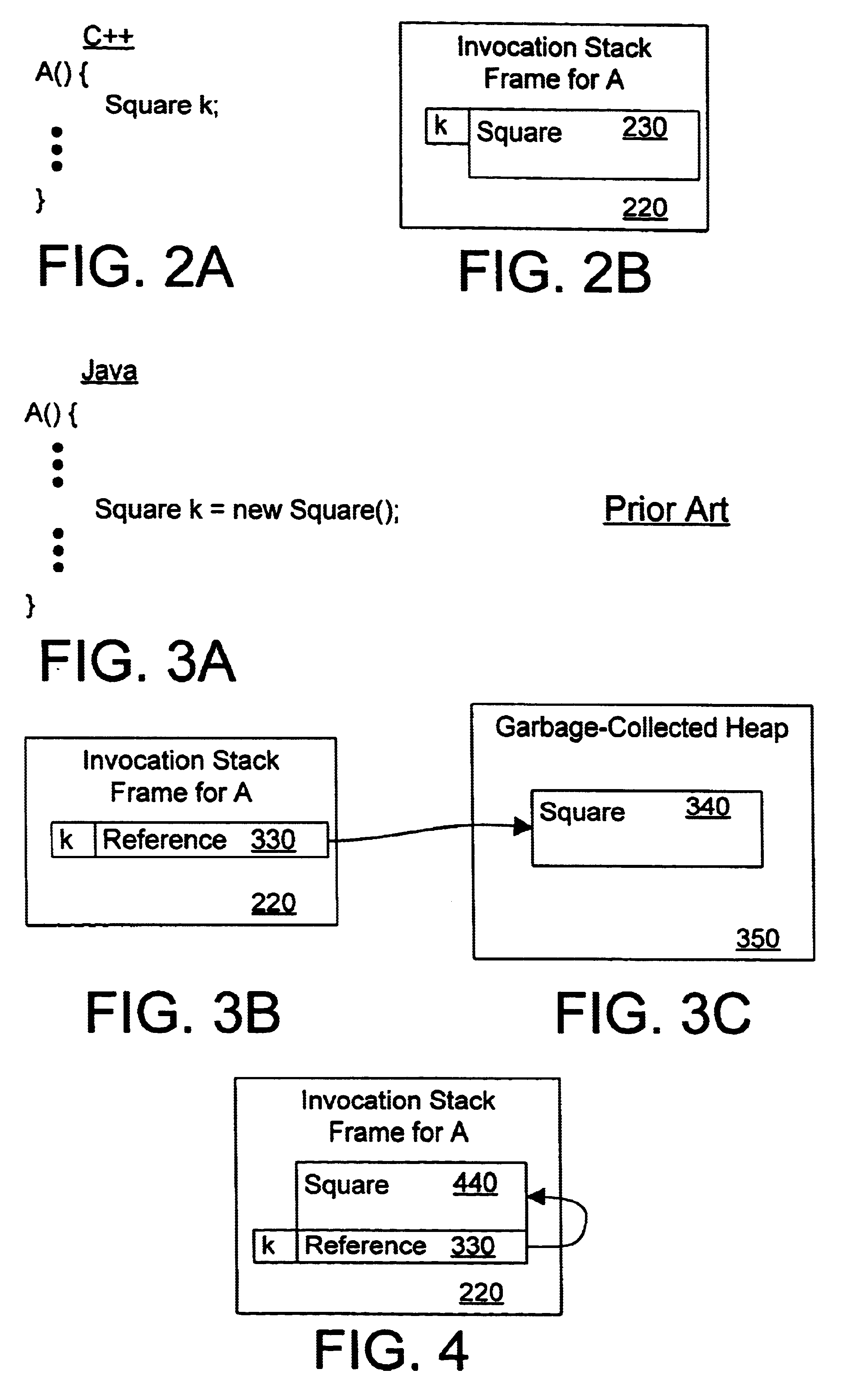Object oriented apparatus and method for allocating array objects on an invocation stack
a technology of array objects and objects, applied in the field of data processing, can solve problems such as stack overflow and unacceptable risk to compilers, and achieve the effect of enhancing the performance of computer programs
- Summary
- Abstract
- Description
- Claims
- Application Information
AI Technical Summary
Benefits of technology
Problems solved by technology
Method used
Image
Examples
Embodiment Construction
An apparatus and method in accordance with the preferred embodiments allow allocating an array object of unknown size at compile time to an invocation stack frame at run-time if certain conditions are met. Run-time code is generated that uses a predetermined threshold value for the size of the array object to allocate objects at run-time that are larger than the predetermined threshold value from the heap, and that allocates objects at run-time that are smaller than the predetermined threshold value to the stack. By allocating small array objects to an invocation stack, the performance of the computer program is enhanced.
Referring to FIG. 9, a method 900 in accordance with the preferred embodiments allocates array objects to a method's invocation stack frame if certain conditions are met. Steps 810, 820 and 830 are preferably the same steps explained above with reference to FIG. 8. The primary difference is the way that method 900 generates optimized code in step 940. Method 900 gen...
PUM
 Login to View More
Login to View More Abstract
Description
Claims
Application Information
 Login to View More
Login to View More - R&D
- Intellectual Property
- Life Sciences
- Materials
- Tech Scout
- Unparalleled Data Quality
- Higher Quality Content
- 60% Fewer Hallucinations
Browse by: Latest US Patents, China's latest patents, Technical Efficacy Thesaurus, Application Domain, Technology Topic, Popular Technical Reports.
© 2025 PatSnap. All rights reserved.Legal|Privacy policy|Modern Slavery Act Transparency Statement|Sitemap|About US| Contact US: help@patsnap.com



